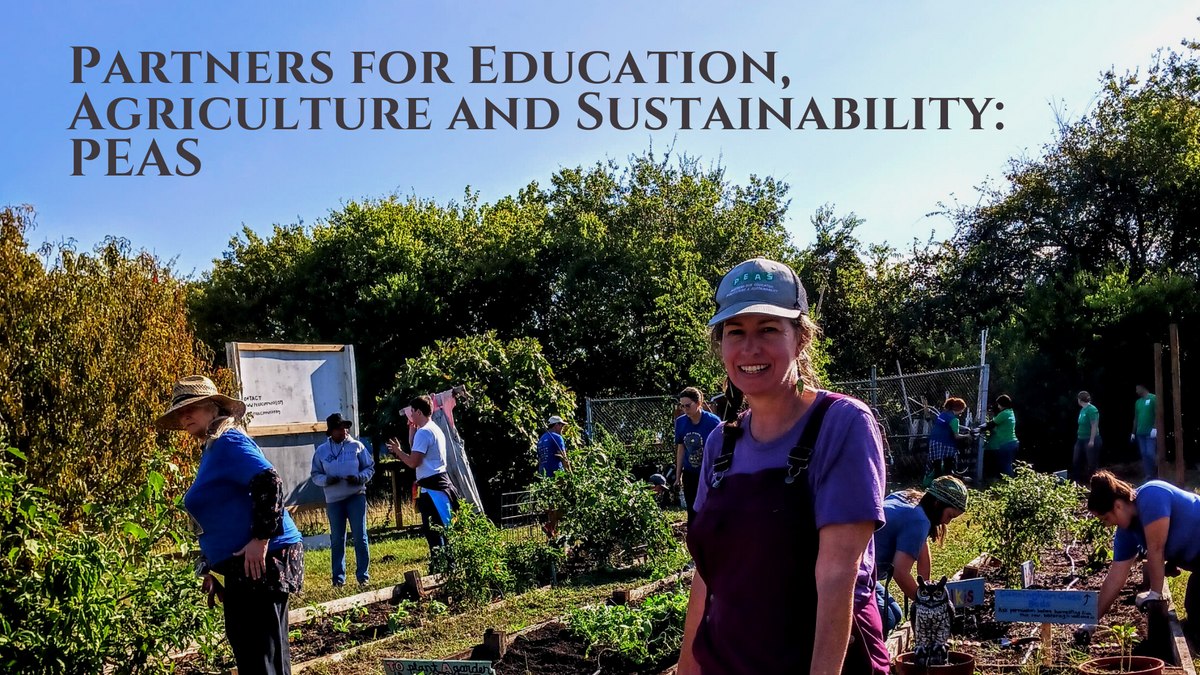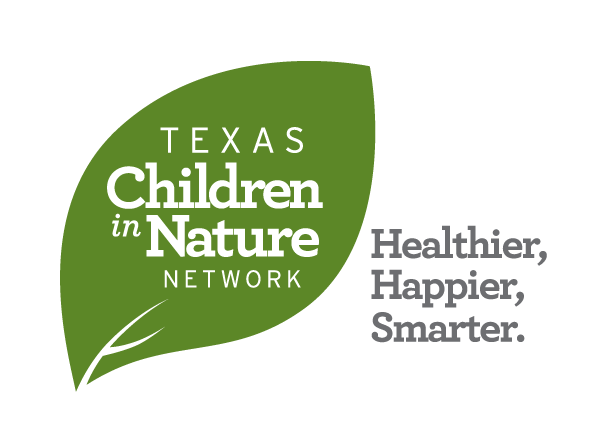
PEAS: Partners for Education, Agriculture and Sustainability
Lauren met with Alice recently to share more about PEAS - Partners for Education, Agriculture and Sustainability's work and new resources.
Lauren, please introduce yourself and tell us a little about you:
I am Lauren Zappone Maples. I'm the Founder and Executive Director of PEAS which stands for Partners for Education, Agriculture and Sustainability. I started out as a classroom teacher and had the opportunity to work with the community in my area on a project that built a community garden and outdoor learning space on a school campus. That's what got me excited about outdoor learning and then realized that it was hard for teachers to have all they needed to get their classes out to use the space. That's why we started PEAS. Our community project started in 2011 and then in 2015 we became a full nonprofit and started outreach programming to other schools.
I am a nature enthusiast and an amateur, self-taught naturalist. I have four children and we've spent a lot of time outdoors with them over the summers. My husband is also an educator so we had summers off for many, many years together to camp all over the place. I think that is one of the biggest joys of my life was that I had the opportunity to share that time with my kids. We would go to the Big Bend area, to both the state and national parks. We've spent a lot of time out there. The state park is a big deal for us just because it's a little less known. We've had the lovely luck of just feeling like we were away from it all when we were out there.
Please tell us about PEAS, Partners for Education, Agriculture and Sustainability, and the work your organization is doing.
The focus of much of our work is centered around providing school day programming on campuses. We partner with classroom teachers. They stay for the whole lesson and they're a part of the lesson by bridging concepts from the classroom to outdoors and back again. Our programming happens in all kinds of green spaces on campus like gardens and wildlife habitats. Some campuses have newly planted tree groves. We use whatever the school has and sometimes we start in the fields. Even if the school hasn't built up a lot of infrastructure yet for their outdoor learning, we can start in a field with an open sky.
Our goal is just to consciously carve out time and space for natural connections, and we want to do it during the school day so the programming is available to all kids. We underwrite the programming for about 90% to 95% of the schools we work with because it’s extremely important that in our city outdoor programming is accessible to all our students. That’s a huge lift on our part, but it’s also a huge reward to know that we get to work directly with so many students.
We're also connected through science and academically aligned and that makes it really easy for the principals and teachers to be on board with the programming. We focus on helping kids understand that they are nature and that we as humans are not separate from nature. We're working hard with some of our staff to bring more indigenous wisdom into our lessons and also within the public system to decolonize our time together and build true connections with the natural elements on the school campuses.
Additionally, we have peripheral programming, support, and resources. We have an edible education program, provide professional development for teachers, and we do consultations and site visits to help people plan their outdoor learning areas. We just published our Easy PEASy Guidebook for Place-Based Outdoor Learning that is a text resource.
We also offer summer camps and other community events. We do regular weekend and after school events at our community farm & urban orchard space on the Cunningham Elementary campus. We are currently working with thirty-four schools doing programming and with two additional schools we're supporting outdoor learning area maintenance. We have thirteen full-time staff and two part-timers and one substitute teacher.
We now have a digital lesson series with thirty-two lessons. A teacher can show the video that is five to eight minutes long to their students indoors and then take them outside to do an activity that has a science journal, vocabulary, and Social Emotional Learning (SEL) activities that go along with it. They do the bulk of their exploration outside with their students and then there's a reflection activity when they come back inside.
This has been a collaboration with one of our staff members who was a former classroom teacher and he created this video series called PEAS Digital Lessons with Nearby Naturalist. The series is available as a fee-based subscription starting now through next school year so someone could use the lessons this spring and then hold on to the subscription through the next school year. The digital lesson videos are available through the PEAS website.
Tell us a bit about the Easy PEASy Guidebook for Place-Based Outdoor Learning.
We realized that at the end of every year after registration we still have schools and teachers that are looking for support. They may even be in the schools where we have programs, but we can't work with their class that particular year. We condensed some of our knowledge and lessons into a guidebook that we hope is very approachable and user friendly for teachers and parents to really think about outdoor learning and how we can holistically engage our students or children. It has some pedagogy to it and a section on eliminating that binary between humans and nature. There are some sample lessons, because of course you want to give teachers something they can go do right away.
At the very end of the guidebook, we connect them to all the other amazing resources, both locally and nationally, and even internationally, where they can get more information. The Easy PEASy Guidebook is specifically for classroom teachers, homeschool groups, and parents who want to do some fun stuff with their kids and understand the importance of outdoor education. I think it's great for people who are advocating for outdoor education in their schools, too. I think it's a wonderful resource for both teachers, parents, and administrators.
The guidebook is available on our website for digital download. It is also published online and available for print on demand through Ingram Sparks, an online publisher. We have some printed copies available to buy locally at our community events. The Easy PEASy Guidebooks will be available for purchase at our tabling events coming up, and at our Earth Day Farm Fest at PEAS Community Farm on April 27th.
What are the goals of the programs you are working on?
I think the big goal is just trying to keep people connected to our Mother Earth because we would not be here without our Earth. We need to take care of all the elements that are a part of our Earth, including ourselves. We have an edible education program and we just want people to see how everything's connected and that we need to build reciprocal relationships with our planet and all its beings for all of us to thrive.
We have some big goals and we know that what we're doing is just a little piece, but I think it’s an important little piece that may get neglected in formal education in certain places. We're just happy to be a part of this work. There are so many great nonprofits in Austin doing this type of work, but with a different focus. The main goal is to connect with each other and connect with the planet.
How does PEAS directly make a difference in helping kids and families connect to nature?
I think just carving out time and space to spend time outdoors. Having a dedicated day at the campus to do things together outdoors. I think that's really important. We also have summer camps and that's an opportunity for families to get involved. We have community events on the weekends where families and caregivers can join their children and be a part of it. It's a lot of fun just to hang out in your community and do things together outside.
The biggest thing that we provide is that time for engagement and the resources that can be helpful when engaging in the outdoors. We're able to help people connect to the resources they need that are more specific to their neighborhood or their school campus. We've been through a lot of processes to impact outdoor learning and we know people who are doing other more specific work that a campus might need. Maybe they want to do a tree planting project or they're looking for soils and we can help them find it. We have a lot of knowledge in the Central Texas community and we're also gaining knowledge nationally and internationally of how to help steer people who are looking for support that we don't provide directly.
Beyond our school program, we directly help kids and families connect to nature through our summer camps. We have three weeks of summer camp that takes place in south Austin on the site of our community farm and the teaching kitchen at Cunningham Elementary.
How can Texas Children in Nature Network be part of your work?
The Texas Children in Nature Network is already a part of our work by sharing the network itself and the opportunities, both to be together in person and through the communications that come out about the partners across the entire state. It is super valuable to us, and for me it’s helpful to get a sense of what other people are doing and where there may be gaps. If there are programming gaps, I wonder how we can provide the support and resources to fill them.
Texas Children in Nature Network is a good hub for figuring out those things with other Texas communities. I especially appreciate getting together in person for the annual Summit. That's always been fun for our team to be a part of an event that brings so many like-minded people together to learn how to better connect children and families to nature, which is so important for everyone.
Thank you, Lauren, for your time today.
To see PEAS in Action check out this video, CBS Austin Clip.
